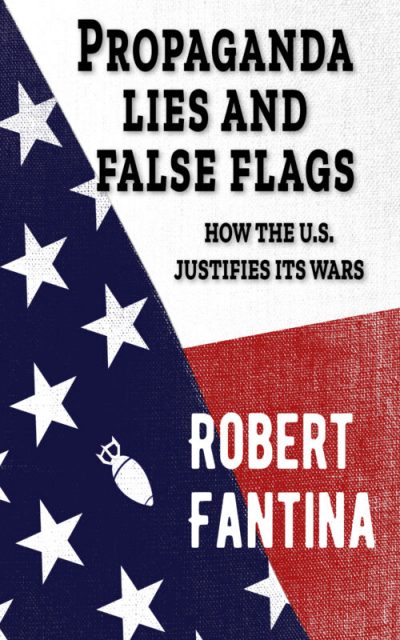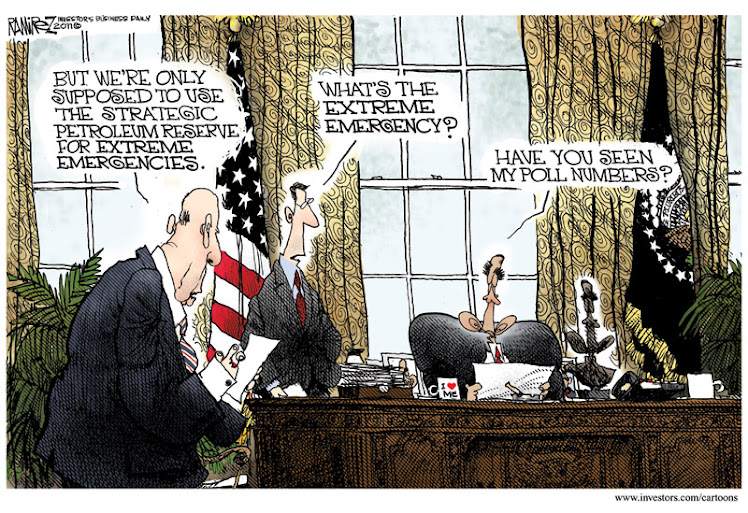New Book Identifies the Paradigm Underpinning U.S. Decisions to Enter War, Past and Present, and the Narrative Used by Government and Media to Garner Widespread Buy-In

Campaigns
against Native Americans. The War of 1812. World War I, World War II,
Iraq and Afghanistan… The United States has been at war for the vast
majority of its history.
These
wars have killed millions of innocent men, women and children around
the world. Yet more often than not they have been based on weak
evidence, questionable motives, and outright lies. Why, then, do large
portions of the public staunchly support the US troops? Why are so many
Americans satisfied with the U.S. bombings of Yemen, Syria,
Afghanistan, Pakistan and other Middle Eastern countries, knowing that
this is creating starvation and refugee crises of catastrophic
proportions?
In his new book, Propaganda, Lies and False Flags: How the U.S. Justifies its Wars (June 2020, Red Pill Press), journalist and human rights activist Robert Fantina
explains how the US government has rallied public opinion to support
its wars and military objectives since before the American Revolution.
Through
a deep, comprehensive analysis of every war the U.S. or its colonial
predecessor has waged from 1755 to the present, Fantina demonstrates a
clear pattern that has shaped not only decisions to enter into war, but
also the narrative used to rally U.S. citizens’ support of these
actions.
The
pattern consists, first, of brandishing what Fantina refers to as
“false flags”—that is, perceived threats, dangers or human rights
violations such as Iraq’s non-existent weapons of mass destruction and
involvement in 9/11, or alleged chemical attacks by the government of
Syria that were never corroborated. Next comes the use of propaganda to
manipulate public opinion and enlist widespread buy-in. Quoting and
parroting the government, the media helps spread this propaganda. This
approach has successfully garnered support for both official warfare and
acts of aggression such as plundering other country’s resources and
removing left-leaning foreign leaders.
The
cost in human life is staggering. Since World War II alone it is
estimated that the U.S. has killed at least 20,000,000 people in over 37
nations. In response to the killing of 3,000 U.S. citizens on September
11, 2001, the U.S. killed at least 1,000,000 Iraqis who, along with
their government, had nothing to do with the 2001 attacks on the U.S.
The many revelations in Propaganda, Lies and False Flags include:
- The testimony that sparked the first Gulf War—the Nayirah testimony—was entirely falsified to further the agenda of Citizens for a Free Kuwait, a US-backed organization. And Nayirah? She was the daughter of the Kuwaiti ambassador to the US, not a hospital volunteer as she claimed in Congressional testimony.
- In 2020 the US assassinated Iran’s General Qassam Soleimani, head of the Quds Force of the Islamic Revolutionary Guard Corps and then considered retaliation from Iran an unprovoked aggression that went to the brink of triggering an invasion.
- The US government developed a narrative positioning Venezuelan opposition leader Juan Guaido as the legitimate president despite not being democratically elected by the people of Venezuela, enabling Guaido to stage a bloody albeit unsuccessful coup. Ultimately it was not about democracy, but oil.
- The 2011 US intervention in Libya for “humanitarian purposes” following Libya’s attempts to quell violent unrest belied resentment for Libya’s support of Palestine and the desire to seize Libya’s rich oil assets.
Each of the book’s fifty-plus case studies is presented with meticulous research and corroborating primary sources.
Ultimately,
Fantina hopes that by recognizing the ‘big lies’ that the U.S.
government tells, people will begin to believe them with less ardor and
less frequency–and that this will be the first step toward changing the
centuries-long U.S. policy of constant war-making.
***
Praise for Propaganda, Lies and False Flags
Keep this book on your shelf to quickly lay your hands on the false reasons for each past war, and many of the real reasons too. The latter are always shameful, which is why the former are invented. Included here are wars, coups, and incidents you may not know about. Not only is this a resource for countering new war lies by comparison with old ones, but with a limited number of nations on earth and the Pentagon’s penchant for attacking the same ones repeatedly, you may just find the very lies now on the news already debunked in this book. —David Swanson, Nobel Peace Prize Nominee and author of twelve books including War Is A Lie and When the World Outlawed War.
Meticulously detailed and thoroughly articulated, Bob Fantina’s latest book, Propaganda, False Flags and US Wars,
is an incredibly valuable resource for citizens across the world. The
amount I learned while reading this book is staggering and Fantina’s
core thesis, that propaganda and false flags are not outliers, but vital
and significant aspects of US war making, going back to the Native
American wars, is imparted in such a manner readers will return to this
book continually as a resource for not just understanding history, but
for understanding current and future US wars. —Matthew Hoh, Senior Fellow, Center for International Policy
***
Propaganda, Lies and False Flags: How the U.S. Justifies its Wars Releases June 2020, click here to pre-order.
*
Note to readers: please click the share buttons above or below.
Forward this article to your email lists. Crosspost on your blog site,
internet forums. etc.
The original source of this article is Global Research
Copyright © Robert Fantina, Global Research, 2020













